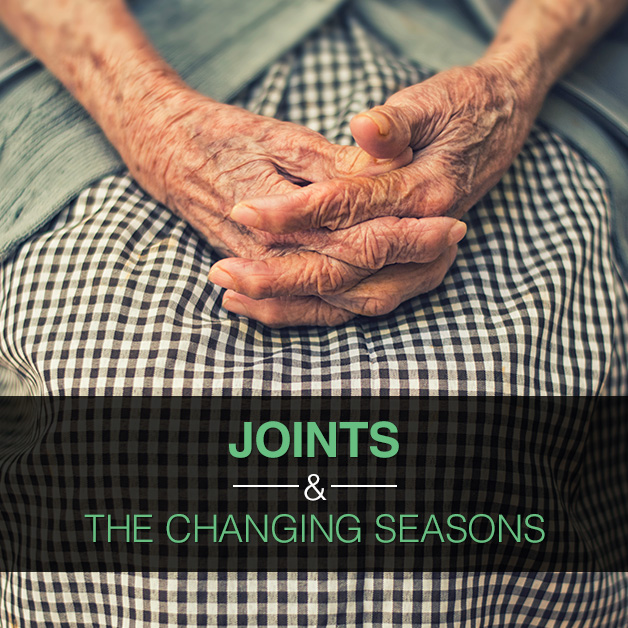
15 Oct Joints and the Changing Seasons
We’re not always fans of the winter. There are some people who love getting outside and playing in the snow, whether that means skiing or simply making snow angels with the kids. However, if you suffer from joint discomfort, the onset of winter is probably your least favorite time of year. Not only can the cold be a problem from many stiff joint sufferers, but when winter turns to spring, it can be a surprising concern as well. So why do the changing seasons cause so much loathing for individuals with joint concerns? And what can you do about it in order to feel your best and not let this time of the year impact you? That’s what we’re here to answer today!
The Connection behind Changing Weather and Your Joints
Do you remember your grandmother saying things like, “I feel a storm coming,” or, “My joints are predicting rain?” As a child you may have thought that she was a magician of some sort who could easily predict the weather, but in reality, her joints were just acting up. But why do joints act up with weather changes? While there is only vague research out there concerning why joints may act up due to weather and seasonal changes, there are three very good guesses as to why this happens.
Cooler Temperatures
It’s no surprise that with the changing of the seasons, cooler temperatures move right in. While this may feel great to some, if you struggle to keep warm or get moving, this can easily wreak havoc on your already temperamental joints. Cooler temperatures can increase stiffness and reduce mobility. On top of this, you’re probably already restricting your exercise and the amount of time you get outside. You probably already know your favorite time of the year, and when you have concerning joints, it’s not the cold winter months.
Increased Humidity
No one has been able to show why increased humidity can impact your joints, however, anecdotally this is a common occurrence. The most logical explanation for why an increase in humidity seems to bother individuals with joint discomfort is that increases in humidity tend to occur with weather changes. This means that storms roll through or temperatures drop at the same time that humidity increases, causing discomfort.
Pressure Changes
The number one reason that scientists and doctors believe that the changing seasons, and changing weather, cause so much discomfort on temperamental joints is because of the pressure changes that are associated with these events. Storms and cooler weather bring low pressure systems, releasing some of the outside forces that press in on your body. This can cause the joints to compress and cause discomfort. These changes in pressure can also lead to lower stability in your joints and changes in joint fluid.
Who Can This Affect?
Most people may not experience this odd situation of joints that can predict the weather, but the ones who do definitely hate when the seasons change. It’s hard to enjoy the fall and winter when all you can think about is how much you hurt. More often than not, however, this problem occurs in individuals who:
- Are older
- Have joint conditions
- Have damaged their joints
- Have chronic health concerns
What You Can Do!
You can’t make the seasons stop changing and the weather sunny and 75 degrees all the time, but there are plenty of things you can do to help your joints. When the weather changes, you don’t have to suffer; try a few of the following tips to figure out what works best to resolve your discomfort this fall.
Natural Health Supplements — Ahead of the changing seasons, you can take natural health supplements, like FLEXSolve 24/7, to help prepare your joints for the coming cold weather. The right supplement can help to lubricate your joints, as well as help to relieve any discomfort.
Additional Heat — One of the most difficult parts of the changing weather is the cold temperatures, so finding additional heat sources can really help. Keeping your house warm, stocking up on extra blankets, and dressing in layers are just a few ways to help improve circulation and how you feel.
Stay Active — It’s easy to stay inside and just curl up near the fireplace when it gets cold, but it’s important to keep your joints moving. Having at-home gym equipment or a place you can easily go that is warm to keep moving will not only help you feel better, but it will help keep your joints strong all year long.
When it comes to the changing seasons, you don’t have to succumb to your achy joints. Instead, take control of your body and provide it with everything it needs to tackle the changing seasons and cold temperatures. Stock up on FLEXSolve 24/7 to get ahead and protect those joints!

